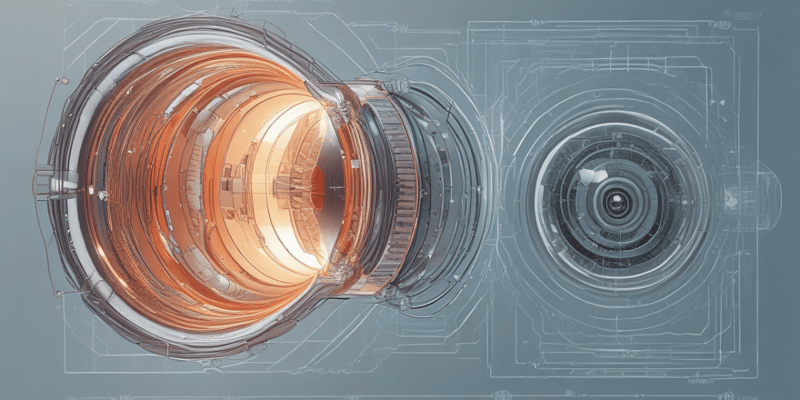18 Questions
Which technique uses a 780 nm infrared light wave for ocular measurements?
Partial coherence interferometry
Which type of biometry technique requires contact with the cornea?
Applanation
Which technique is more precise than a 10 MHz sound wave for ocular measurements?
Partial coherence interferometry
Which factor impacts the height of the A-Scan spikes in biometry?
Angle of incidence
Which instrument setting is impacted by the shape and smoothness of the interface in biometry?
Interface
Which technique is less useful in cases of very dense cataract and corneal edema due to light absorption or eye fixation?
IOL Master
What is the purpose of adjusting the Sound Velocity in an ultrasound examination?
To calculate accurate axial eye length measurements
Which measurement mode would be most suitable for a patient with an artificial lens implanted (IOL)?
Pseudophakic
What does Gain control in ultrasonic devices primarily affect?
The visualization of weaker signals
Why is adjusting the instrument's Gain setting important in ultrasonography?
To amplify returning ultrasonic signals uniformly
Which parameter should be checked before beginning an examination to ensure accurate measurements?
Sound Velocity
Which of the following modes provides choices for manual or automatic measuring approaches?
Phakic
How does the angle of incidence impact the height of A-Scan spikes?
Parallel incidence results in high-amplitude spikes, while oblique incidence compromises spike height.
What factor influences the height of A-Scan spikes by reflecting away part of the returning echo from the probe tip?
The shape and smoothness of the interface
Which statement best describes how absorption impacts A-Scan spikes?
Greater absorption occurs in denser structures, leading to weaker echoes.
How does the shape and smoothness of the interface affect A-Scan spikes?
Irregularities in the interface decrease the strength of returning echoes.
Which factor directly determines how much of the returning echo is received by the probe tip?
Angle of incidence
How does the density of a structure impact sound beam absorption?
Greater density leads to increased sound beam absorption.
Study Notes
Ocular Measurement Techniques
- The 780 nm infrared light wave is utilized in ocular measurements, particularly in non-contact optical biometry.
- Contact biometry techniques require direct contact with the cornea for measurements to ensure precision.
Precision and Measurement Factors
- Techniques utilizing ultrasound are generally more precise than those using a 10 MHz sound wave for ocular measurements.
- The height of A-Scan spikes is influenced by various factors, including the angle of incidence and the density of structures encountered by the sound beam.
Instrument Settings and Reliability
- The shape and smoothness of the interface directly impact instrument settings, affecting the accuracy and reliability of measurements.
- Adjusting Sound Velocity in ultrasound examinations is essential for ensuring accurate distance measurements.
Patient Considerations
- A specific measurement mode must be utilized for patients with an implanted artificial lens (IOL) to provide correct readings.
- Gain control in ultrasonic devices primarily influences the amplification of the returning echoes to obtain a clearer image.
Importance of Adjustments
- Adjusting the instrument's Gain setting in ultrasonography is crucial to minimize noise and maximize the clarity of the signals.
- Before beginning an examination, checking the parameters for calibration ensures accurate measurements.
Measurement Approaches
- Some modes allow for manual or automatic measuring approaches, providing flexibility based on the technician's preference or patient condition.
Impact of Absorption and Angle
- Absorption affects A-Scan spikes by diminishing the strength of the echoed signals received by the probe, leading to less precise measurements.
- The angle of incidence affects how much of the returning echo the probe tip can receive, thereby influencing the height of the A-Scan spikes.
Structural Influence on Sound Waves
- The density of a structure determines how much sound beam absorption occurs, with denser materials absorbing more sound and affecting the accuracy of the readings.
- The returning echo's reflection can also impact the A-Scan spikes by diverting some of the signals away from the probe tip.
Learn about the instrument settings that need to be adjusted before starting an ultrasound examination, including sound velocity, measurement mode, gain, and position of gates or cursors. This quiz also explains why retinal spike quality is reduced in the case of an extremely dense cataract.
Make Your Own Quizzes and Flashcards
Convert your notes into interactive study material.




